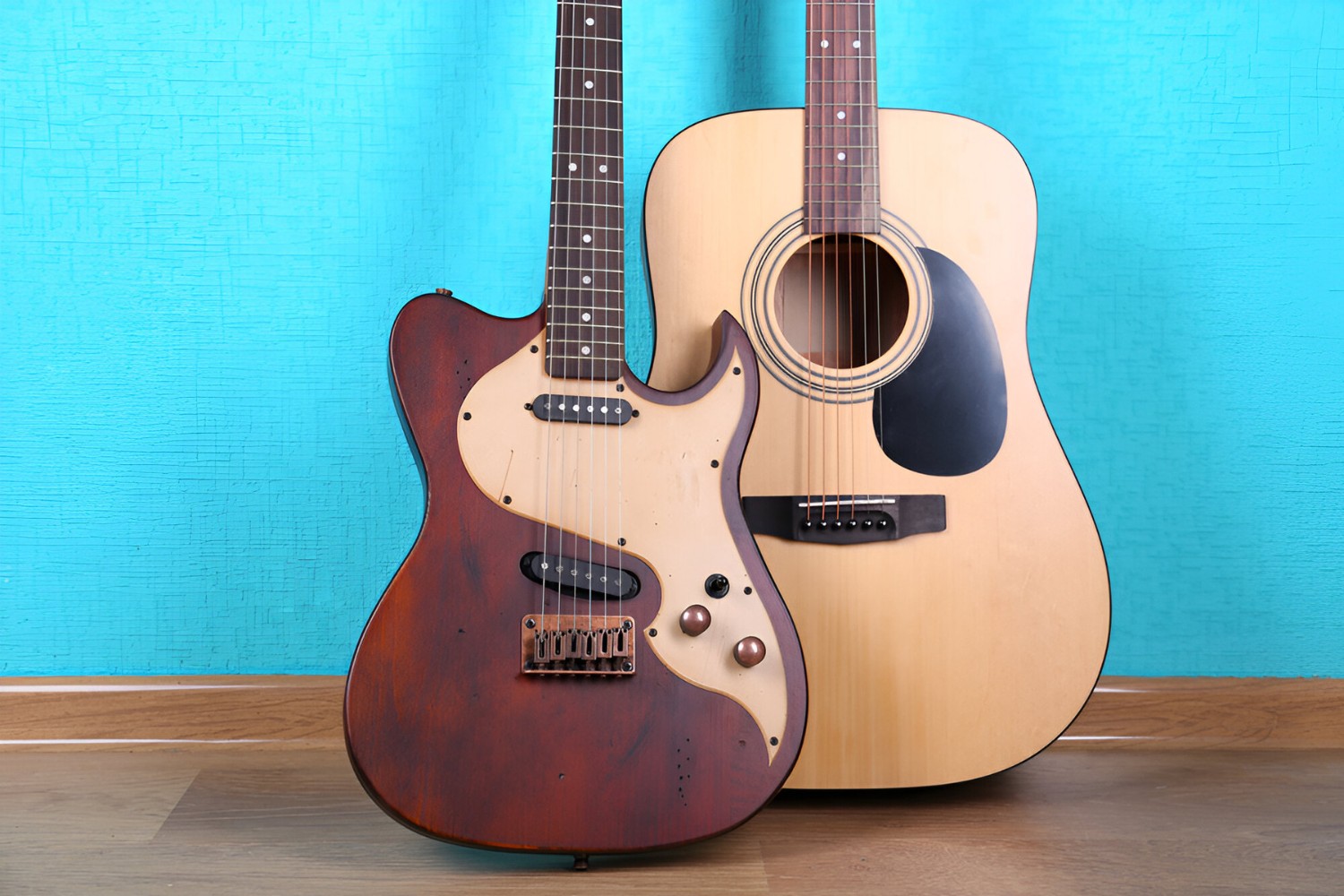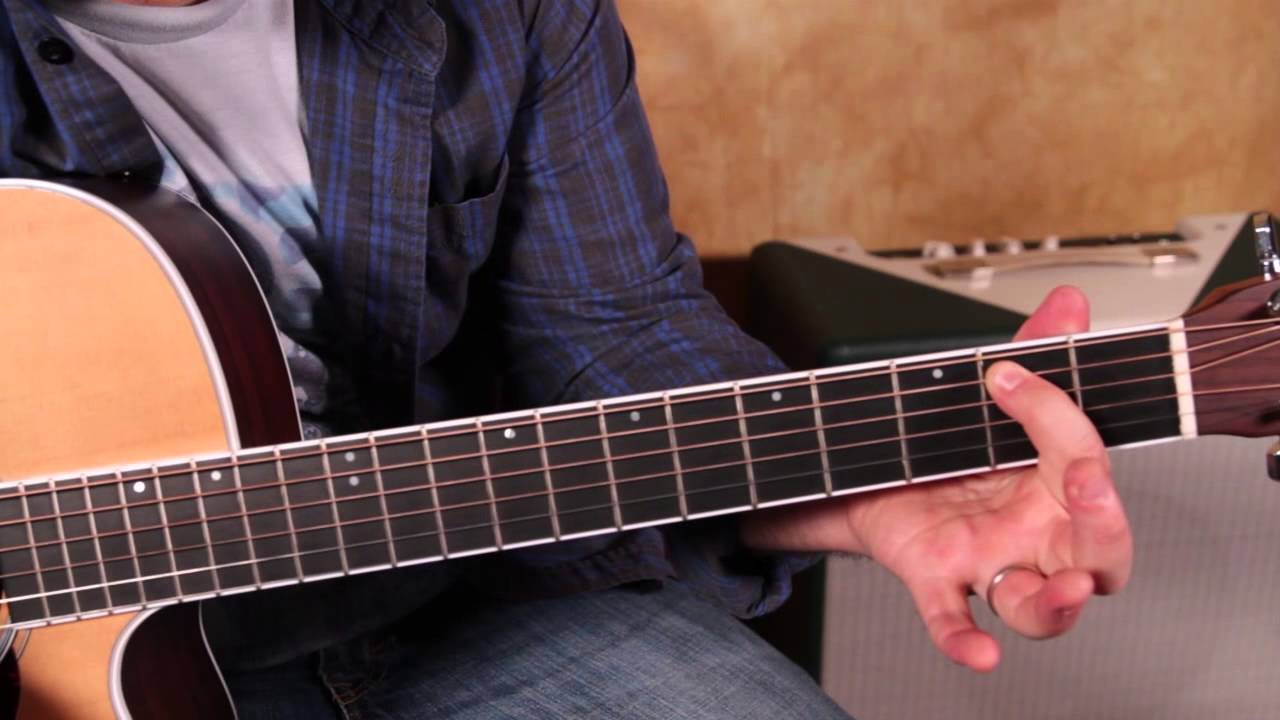Choosing the Right Guitar
When embarking on the journey to learn the acoustic guitar, selecting the right instrument is a crucial first step. With a myriad of options available, it's essential to consider several factors to ensure that the chosen guitar aligns with your preferences and playing style.
Consider Your Budget:
Before making a purchase, determine the budget for your guitar. Acoustic guitars come in various price ranges, and setting a budget will help narrow down the options and prevent overspending.
Body Type:
Acoustic guitars are available in different body types, such as dreadnought, concert, and parlor. Each type offers distinct tonal qualities and ergonomics, so it's advisable to try out different body styles to determine which feels most comfortable and produces the desired sound.
Tone Woods:
The choice of tonewoods significantly influences the guitar's sound. For instance, spruce is known for its bright and articulate tones, while mahogany offers warmth and depth. Exploring the tonal characteristics of various woods can aid in selecting a guitar that produces the desired sound.
Playability:
When choosing a guitar, consider the action, or the distance between the strings and the fretboard. A guitar with a comfortable action facilitates ease of play and reduces finger fatigue, especially for beginners.
Brand and Reputation:
Researching reputable guitar brands and reading reviews can provide valuable insights into the quality and craftsmanship of different models. Established brands often offer reliable instruments with better resale value and customer support.
Acoustic-Electric Option:
If you anticipate performing live or recording, an acoustic-electric guitar with built-in pickups may be a worthwhile investment. This feature allows the guitar to be amplified, offering versatility for various playing environments.
By carefully considering these factors, you can make an informed decision when choosing an acoustic guitar that complements your musical aspirations and sets the stage for an enjoyable learning experience.
Basic Guitar Anatomy
Before delving into the intricacies of playing the acoustic guitar, it’s essential to familiarize yourself with its basic anatomy. Understanding the various components of the instrument will not only enhance your playing experience but also facilitate maintenance and troubleshooting as you progress on your musical journey.
Headstock:
The headstock is located at the top of the guitar and houses the tuning pegs, which are used to adjust the tension of the strings, thereby altering their pitch. It also serves as a platform for the attachment of the strings.
Neck and Fretboard:
The neck extends from the body of the guitar and provides a platform for the fretboard. Frets are the metal strips embedded along the fretboard, allowing the player to change the pitch of the notes by pressing the strings against them at different positions.
Body:
The body of the guitar not only houses the sound hole, which projects the sound, but also determines the instrument’s resonance and tonal characteristics. It is typically made of various tonewoods, contributing to the guitar’s overall sound.
Bridge and Saddle:
The bridge holds the strings in place at the base of the guitar, while the saddle, located on the bridge, aids in transmitting the vibrations of the strings to the guitar’s body, influencing the overall tone and volume.
Sound Hole:
The sound hole is an opening on the body of the guitar that allows the sound to escape, contributing to the instrument’s acoustic projection and resonance.
Strings:
Acoustic guitars typically have six strings, each tuned to a specific pitch. They are usually made of steel or nylon, with steel strings producing a brighter sound, while nylon strings offer a mellower tone.
Truss Rod:
Located within the neck of the guitar, the truss rod is adjustable and helps control the curvature of the neck, ensuring optimal playability and addressing issues such as fret buzz.
Position Markers:
These markers, often in the form of dots or other symbols on the fretboard, assist in navigating the neck and locating specific frets, aiding in chord changes and soloing.
By familiarizing yourself with the basic anatomy of the acoustic guitar, you lay a solid foundation for your musical journey, empowering yourself to understand and appreciate the instrument’s construction and functionality.
Tuning Your Guitar
One of the fundamental skills every aspiring guitarist must master is tuning the instrument. Proper tuning ensures that the strings produce the correct pitches, allowing for harmonious and melodious playing. Whether using an electronic tuner, a tuning app, or tuning by ear, the process of tuning the acoustic guitar is an essential aspect of the learning journey.
Standard Tuning:
The standard tuning for an acoustic guitar, from the lowest (6th) string to the highest (1st) string, is E-A-D-G-B-E. This standard tuning provides a versatile foundation for learning chords, scales, and songs.
Electronic Tuners:
Electronic tuners are valuable tools for precise tuning. They detect the pitch of each string and indicate whether it is tuned too high (sharp) or too low (flat). Tuning with an electronic tuner ensures accuracy and is particularly beneficial for beginners.
Tuning Apps:
Tuning apps, available on smartphones and tablets, offer convenient and portable tuning solutions. These apps utilize the device’s microphone to analyze the pitch of each string, providing real-time feedback to assist in achieving the correct tuning.
Tuning by Ear:
Developing the ability to tune the guitar by ear is a valuable skill that enhances musical ear training. While initially challenging, tuning by ear enables players to develop a keen sense of pitch and fosters a deeper connection with the instrument.
Relative Tuning:
In the absence of a tuner or reference pitch, relative tuning allows for tuning the guitar by ear. This method involves tuning one string to a known pitch, such as the 5th fret of the adjacent string, and subsequently tuning the remaining strings relative to the initial reference pitch.
Importance of Regular Tuning:
Due to factors such as temperature, humidity, and string tension, guitars can fall out of tune. Therefore, regular tuning before practice sessions and performances is essential to maintain the instrument’s pitch accuracy and ensure an enjoyable playing experience.
Mastering the art of tuning the acoustic guitar is a foundational skill that lays the groundwork for musical proficiency and enjoyable playing experiences. Whether utilizing electronic tuners, tuning apps, or developing the ability to tune by ear, the process of tuning fosters a deeper connection with the instrument and enhances the musical journey.
Basic Chords and Strumming
As you embark on your acoustic guitar journey, familiarizing yourself with basic chords and strumming patterns forms the foundation for playing countless songs across various genres. Mastering these fundamental elements empowers you to accompany melodies, create harmonies, and express your musical creativity.
Open Chords:
Open chords, such as C, D, G, E, and A, are essential building blocks for playing a wide array of songs. These chords are played in open positions and provide a resonant, full-bodied sound that forms the backbone of many popular compositions.
Barre Chords:
Barre chords involve using a single finger to fret multiple strings, enabling you to play chords up and down the neck of the guitar. While initially challenging, mastering barre chords expands your harmonic possibilities and facilitates playing songs in different keys.
Strumming Patterns:
Strumming patterns dictate the rhythmic feel of a song and are integral to conveying its musical groove. Whether employing downstrokes, upstrokes, or a combination of both, developing varied strumming patterns adds depth and dynamics to your playing.
Timing and Rhythm:
Understanding timing and rhythm is crucial when practicing chords and strumming. Utilizing a metronome or drum track can aid in developing a solid sense of timing, ensuring that chords are played in sync with the beat and enhancing overall musicality.
Chord Transitions:
Smooth and efficient chord transitions are essential for fluid and seamless playing. Practicing transitioning between chords enhances muscle memory and dexterity, allowing for effortless progression through chord sequences.
Embellishments and Variations:
Incorporating embellishments, such as hammer-ons, pull-offs, and chord variations, adds nuance and expression to your playing. These techniques infuse character into chord progressions, elevating the musicality of your performances.
Ear Training:
Developing your ear for chord progressions and strumming patterns enhances your ability to play by ear, improvise, and accompany other musicians. Ear training fosters a deeper understanding of musical structures and facilitates seamless adaptation to various musical contexts.
By mastering basic chords and strumming techniques, you lay a strong foundation for your acoustic guitar journey, enabling you to play a diverse repertoire of songs and develop your unique musical style. Embracing the nuances of chord transitions, strumming patterns, and rhythmic variations enriches your musical expression and fosters a deeper connection with the instrument.
Learning Guitar Tabs
Understanding guitar tabs, or tablature, is an invaluable skill for acoustic guitarists, as it provides a visual representation of songs and compositions. Unlike traditional sheet music, guitar tabs convey the finger positions and string placements required to play specific notes and chords, offering a straightforward method for learning and interpreting music.
Tab Layout:
Guitar tabs consist of six lines, each representing a string of the guitar, with numbers indicating the frets where the notes are played. This intuitive layout allows players to visualize finger placements and note sequences, facilitating the learning process.
Reading Rhythms:
While guitar tabs excel in illustrating note locations, they may not explicitly convey rhythm. As a result, it’s beneficial to listen to the song and internalize the rhythm, allowing the tab to guide finger placement while the musical intuition guides the timing.
Chord Diagrams:
In addition to individual notes, guitar tabs often incorporate chord diagrams, depicting the finger positions for specific chords. This integration enables players to seamlessly transition between individual notes and chords within a song.
String Bending and Vibrato Notation:
Advanced guitar tabs may include symbols and notations for techniques such as string bending and vibrato, providing comprehensive guidance for replicating the nuances and articulations present in the original recordings.
Transcribing Songs:
Transcribing songs into guitar tabs is a valuable exercise for developing ear training and musical transcription skills. By transcribing music, you enhance your ability to interpret melodies and harmonies, fostering a deeper understanding of musical composition.
Online Resources:
A plethora of online platforms offer extensive libraries of guitar tabs for songs across various genres and difficulty levels. Leveraging these resources provides access to a diverse repertoire of music, enabling you to expand your playing repertoire and explore new musical horizons.
Creating Your Own Tabs:
As you progress in your guitar journey, creating your own guitar tabs for original compositions or arrangements becomes a powerful tool for documenting and sharing your musical ideas. This process fosters creativity and serves as a means of preserving and communicating musical concepts.
By embracing guitar tabs as a learning tool, you gain access to a wealth of musical knowledge and repertoire, empowering you to learn, interpret, and create music on the acoustic guitar. Whether transcribing songs, utilizing online resources, or creating original tabs, the ability to read and interpret guitar tabs enriches your musical journey and expands your creative potential.
Practicing Techniques
Effective practice techniques are essential for honing your skills and mastering the acoustic guitar. By incorporating deliberate and focused practice strategies, you can optimize your learning experience, enhance muscle memory, and cultivate a nuanced and expressive playing style.
Consistent Practice Schedule:
Establishing a consistent practice schedule fosters discipline and facilitates steady progress. Whether dedicating a specific time each day or setting aside several sessions per week, a regular practice routine forms the cornerstone of skill development.
Warm-Up Exercises:
Prior to delving into practice sessions, warming up with exercises such as finger stretches, chromatic scales, and simple chord progressions prepares your fingers and hands for playing, reducing the risk of strain and enhancing dexterity.
Focused Repetition:
When learning new chords, scales, or songs, focused repetition is key to solidifying muscle memory and technical proficiency. Repetitive practice of challenging passages gradually enhances fluency and accuracy in execution.
Slow and Steady Approach:
Practicing at a slower tempo initially allows for meticulous attention to finger placement, strumming patterns, and chord transitions. As proficiency increases, gradually increasing the tempo ensures a controlled and precise playing style.
Metronome Practice:
Incorporating a metronome into your practice sessions cultivates a strong sense of timing and rhythm. Playing along with a metronome develops a steady internal pulse and promotes consistent tempo control, essential for ensemble playing and live performances.
Ear Training Exercises:
Engaging in ear training exercises, such as identifying intervals, chord progressions, and melodies by ear, sharpens your musical perception and facilitates seamless adaptation to various musical contexts. Ear training enhances your ability to play by ear and improvise with confidence.
Recording and Self-Evaluation:
Recording your practice sessions and performances provides a valuable tool for self-evaluation. Listening back to recordings enables you to identify areas for improvement, track progress, and refine your playing technique and musical expression.
Varying Practice Content:
Incorporating a diverse range of practice content, including scales, arpeggios, chord progressions, and song repertoire, fosters well-rounded skill development. This approach cultivates versatility and adaptability, enriching your musical proficiency.
By integrating these effective practice techniques into your acoustic guitar journey, you can elevate your playing skills, deepen your musical understanding, and foster a lifelong passion for the instrument. Consistent and focused practice, combined with varied exercises and self-assessment, forms the bedrock of continuous improvement and artistic growth as a guitarist.
Playing Your First Song
Embarking on the exhilarating endeavor of playing your first song on the acoustic guitar marks a significant milestone in your musical journey. This momentous occasion not only signifies the culmination of dedicated practice and learning but also serves as a catalyst for further exploration and artistic expression.
Song Selection:
Choosing a song that resonates with your musical taste and aligns with your skill level is crucial for an enjoyable and rewarding experience. Opt for a song with manageable chord progressions and strumming patterns, allowing you to apply your practiced techniques in a practical context.
Chord Proficiency:
Ensure that you are comfortable with the chords featured in the song. Familiarity with the chord shapes and smooth transitions between them lays the groundwork for confidently navigating the song’s chord progressions.
Rhythmic Accuracy:
Pay attention to the song’s rhythmic nuances and strumming patterns. Strive to maintain consistent timing and dynamics, capturing the essence of the song’s groove and feel through precise and expressive strumming.
Lyric and Melody Familiarity:
Familiarize yourself with the song’s lyrics and melody. Understanding the lyrical content and melodic structure enhances your ability to convey the song’s emotional depth and narrative through your playing.
Play-Along Resources:
Utilize play-along resources, such as backing tracks or online tutorials, to accompany your practice. Playing along with the song’s accompaniment enhances your sense of ensemble playing and provides a supportive musical backdrop.
Expressive Interpretation:
Infuse your personal interpretation and expression into the song. Embrace the opportunity to add subtle embellishments, variations in strumming, and dynamic nuances, imbuing the performance with your unique musical identity.
Celebrate Progress:
Celebrate the accomplishment of playing your first song, regardless of any imperfections. Embrace the learning process and acknowledge the progress made, fostering a positive and encouraging mindset as you continue to expand your repertoire.
Reflect and Set New Goals:
Reflect on the experience of playing your first song and identify areas for further growth. Setting new musical goals, whether learning more complex songs, delving into fingerstyle techniques, or exploring songwriting, propels you toward continued advancement and musical exploration.
Playing your first song on the acoustic guitar embodies the fulfillment of dedication, practice, and perseverance, igniting a passion for musical expression and creativity. Embrace this milestone with enthusiasm, and let it serve as a springboard for ongoing artistic development and the joy of making music.
Resources for Further Learning
As you progress on your acoustic guitar journey, leveraging diverse resources for ongoing learning and skill development is instrumental in broadening your musical horizons and refining your playing technique. A multitude of resources, ranging from online platforms to instructional materials, offer comprehensive support and guidance for continuous growth as a guitarist.
Online Learning Platforms:
Explore reputable online platforms that provide structured guitar courses, video tutorials, and interactive lessons. These platforms offer a wealth of instructional content, catering to various skill levels and genres, and often feature comprehensive curricula designed to nurture well-rounded musicianship.
Tab and Chord Websites:
Utilize online repositories of guitar tabs, chords, and song lyrics to expand your repertoire and explore new music. These websites offer a vast library of songs across genres, enabling you to learn and play a diverse range of music while honing your chord transitions and strumming patterns.
Community Forums and Discussion Boards:
Engage with online guitar communities and forums to seek advice, share experiences, and connect with fellow guitar enthusiasts. These platforms provide a supportive environment for exchanging musical insights, troubleshooting challenges, and discovering valuable tips and resources.
Private Instruction:
Consider enlisting the guidance of a private guitar instructor to receive personalized feedback, tailored instruction, and structured learning plans. Private lessons offer a focused and individualized approach, allowing for targeted skill development and mentorship from experienced musicians.
Music Theory Resources:
Delve into music theory resources to deepen your understanding of harmony, melody, and rhythm. Acquiring foundational knowledge of music theory enhances your musical comprehension, enabling you to interpret compositions, improvise, and compose with greater fluency.
Performance Opportunities:
Seek opportunities to perform and collaborate with other musicians, whether in informal jam sessions, open mic nights, or ensemble settings. Engaging in live performance experiences fosters confidence, ensemble playing skills, and stage presence, contributing to a well-rounded musical development.
Instrument Maintenance and Care Guides:
Explore resources on guitar maintenance, care, and setup to ensure the optimal condition and longevity of your instrument. Understanding proper maintenance practices and setup adjustments empowers you to preserve the playability and tonal integrity of your acoustic guitar.
Music Publications and Books:
Immerse yourself in guitar literature and instructional books that cover a wide range of topics, including technique, repertoire, music history, and biographies of influential guitarists. These resources offer in-depth exploration and insights, enriching your musical knowledge and appreciation.
By embracing these diverse resources for further learning, you embark on a continuous and enriching musical odyssey, expanding your repertoire, honing your skills, and nurturing a lifelong passion for the acoustic guitar. Engaging with a variety of resources fosters a comprehensive and multifaceted approach to musical growth, empowering you to evolve as a versatile and expressive guitarist.

























